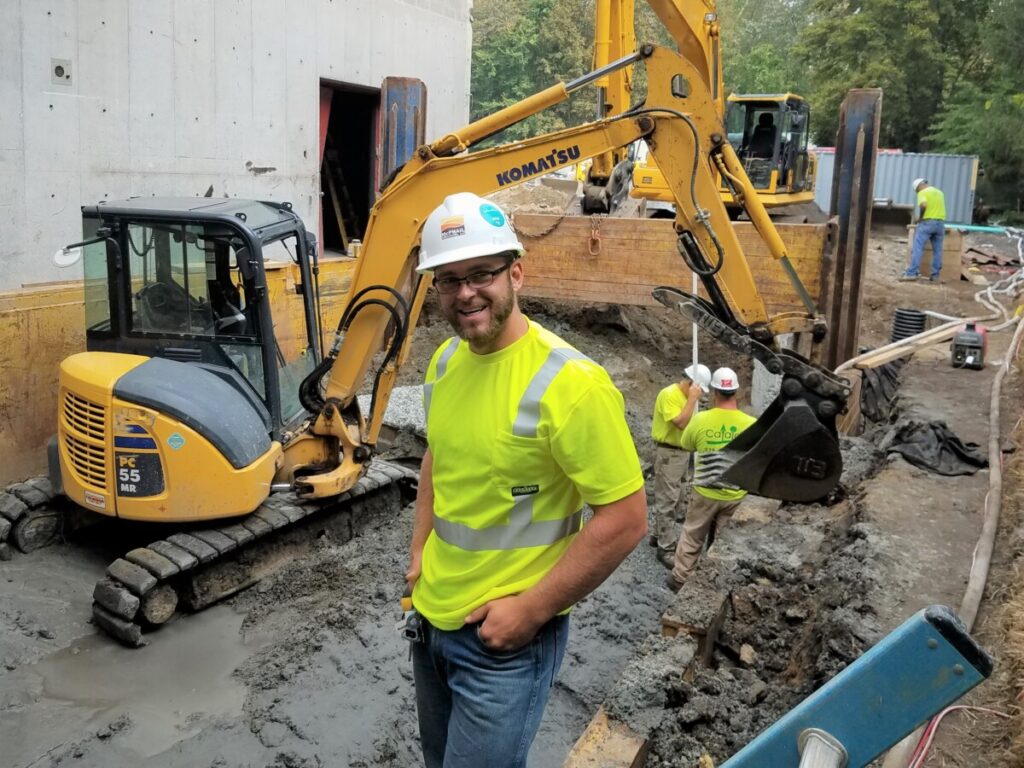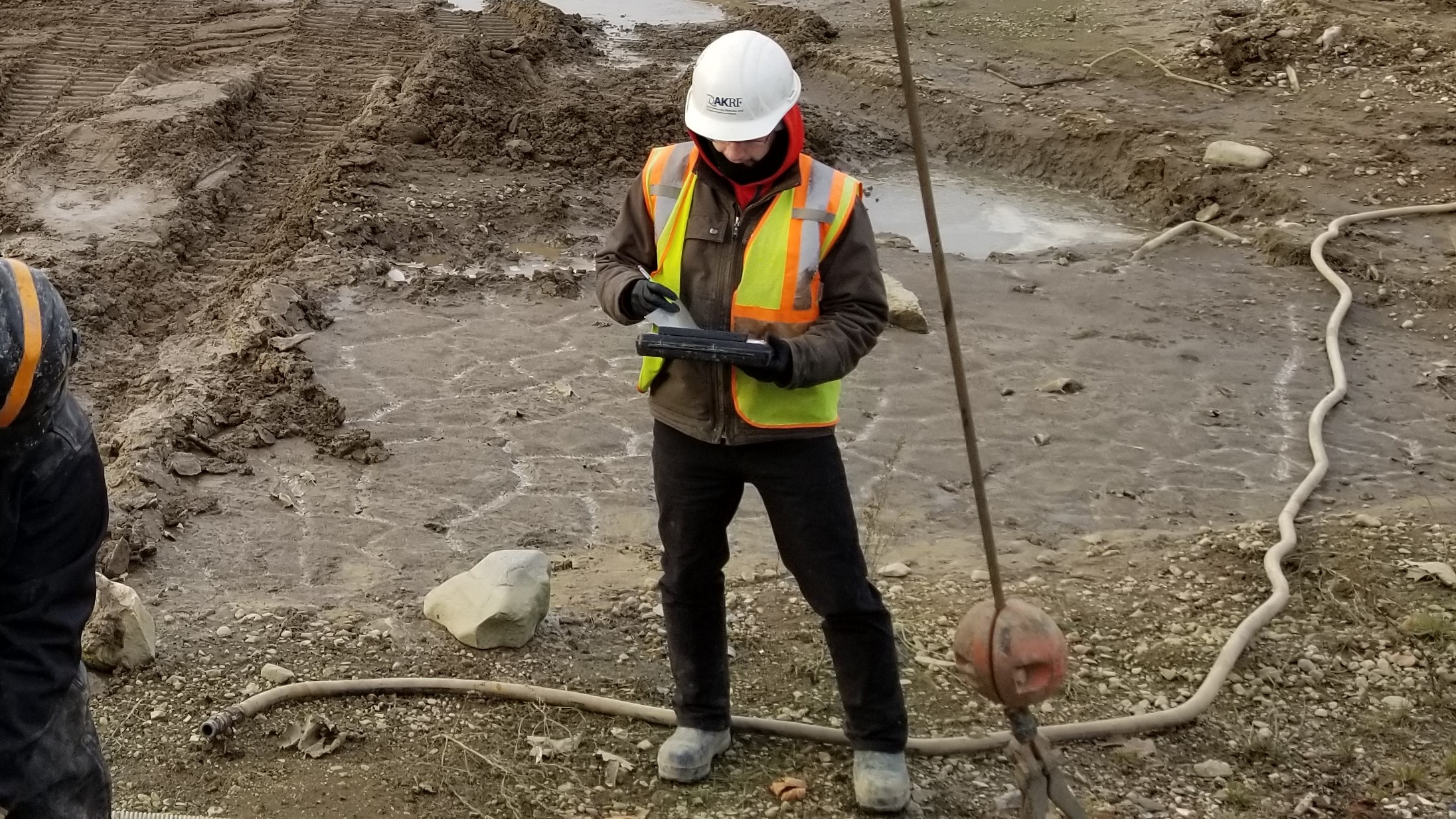Important Abilities for Prospering in the Geotechnical Industry Today
A Comprehensive Introduction of the Trick Duties of Geotechnical Designers in Website Characterization and Ground Improvement Techniques for Engineering Solutions
Geotechnical designers are integral to the successful execution of engineering tasks, entrusted with the vital responsibilities of site characterization and the application of ground improvement techniques. Their work entails a thorough evaluation of subsurface problems, utilizing different testing methods to identify dirt and rock residential or commercial properties.
Duty of Geotechnical Engineers
Geotechnical engineers play a pivotal role in the design and building of framework by analyzing the behavior of dirt and rock underneath the surface area - geotechnical industry. Their responsibilities encompass reviewing subsurface conditions to educate design choices that guarantee structural stability and safety. By conducting comprehensive evaluations of soil residential properties, consisting of shear leaks in the structure, toughness, and compressibility, geotechnical designers supply vital information that affects the option of ideal building products and methods
In enhancement to evaluating dirt auto mechanics, geotechnical engineers are entrusted with determining prospective risks such as landslides, sinkholes, and ground negotiations. Their knowledge aids mitigate risks related to these geotechnical phenomena, consequently protecting both the atmosphere and public security. They also collaborate carefully with other design disciplines, making sure that geotechnical factors to consider are integrated into overall project layout.
Furthermore, geotechnical designers take part in the evaluation of existing frameworks, providing referrals for retrofitting and repair work when needed. Their comprehensive understanding of soil-structure communication is important for the development of sustainable facilities options. Overall, the function of geotechnical engineers is important to the effective realization of construction projects, ensuring they are risk-free, durable, and compliant with regulatory requirements.

Website Characterization Procedures
Effective site characterization processes are necessary for recognizing the subsurface conditions that affect task layout and execution. Geotechnical designers employ a systematic method to collect, assess, and interpret information pertaining to groundwater, dirt, and rock attributes. This process begins with a complete testimonial of existing literature and historical website information, providing understandings into previous site problems and potential challenges.

Data evaluation adheres to fieldwork, where designers utilize geostatistical techniques to interpret searchings for and develop geological designs. Through persistent site characterization, geotechnical engineers lay the foundation for successful project implementation, enhancing and reducing unpredicted complications source allotment.
Dirt and Rock Testing Approaches
While understanding subsurface conditions is crucial, the selection of ideal soil and rock screening techniques is just as essential for accurate evaluation and style. Geotechnical engineers employ a variety of screening methods to review the mechanical and physical buildings of dirt and rock materials.
Laboratory examinations, such as Atterberg limits, grain dimension analysis, and unconfined compressive stamina tests, give crucial information on dirt habits under different wetness conditions and filling scenarios. These tests aid figure out dirt category and predict negotiation or shear strength qualities important for foundation style.
In-situ screening techniques, consisting of Requirement Infiltration Examinations (SPT), Cone Penetration Examinations (CPT), and pressure meter examinations, enable designers to collect data directly from the ground. These methods use valuable insights into the dirt's thickness, uniformity, and stratification without the demand for comprehensive sampling.
Rock screening usually entails core sampling and research laboratory evaluation to examine residential properties like uniaxial compressive strength and rock quality designation (RQD) Together, these soil and rock screening approaches make it possible for geotechnical designers to make enlightened decisions relating to site-specific obstacles, ensuring the safety and stability of engineering services.
Ground Improvement Strategies
Ground enhancement strategies are vital for enhancing the engineering buildings of soil, therefore enhancing its load-bearing capability and minimizing settlement. These techniques are essential in attending to difficulties offered by weak or problematic dirts, which can substantially affect the security and toughness of frameworks.
Various ground improvement strategies are employed, including compaction, grouting, and soil stabilization. Compaction includes increasing the thickness of dirt through mechanical ways, which boosts its shear toughness and decreases compressibility. Grouting, on the other hand, includes infusing a fluid product into the ground to fill voids and enhance soil communication. This method is specifically effective for treating loose sands or broken rock.
Soil stabilization encompasses a variety of techniques, from chemical ingredients to mechanical treatments, intended at boosting the dirt's resistance to disintegration and contortion. Methods such as lime stabilization or concrete blending alter the residential properties of the soil at a bit degree, enhancing its overall performance.
Value of Geotechnical Assessments
Geotechnical assessments play a critical duty in the preparation and layout of engineering jobs, as they offer important information about the subsurface conditions. Recognizing dirt homes, rock developments, groundwater degrees, and potential geohazards is crucial for ensuring the security and like it security of frameworks. These assessments enable engineers to make informed choices regarding site choice, layout specifications, and building and construction approaches.
The importance of geotechnical evaluations extends past initial project phases; they are crucial in danger administration and price effectiveness. By determining potential issues early, such as soil settlement, slope instability, or excessive groundwater, engineers can create appropriate mitigation strategies, decreasing the probability of costly delays and structural failings. These evaluations sustain conformity with regulative needs and improve the sustainability of engineering methods.

Final Thought
To conclude, geotechnical engineers are essential to making sure the security and stability of engineering projects through thorough site characterization and ground improvement strategies. civil consulting engineers. Their methodical strategy to examining subsurface problems, combined with their referrals for effective ground alteration, significantly boosts dirt residential properties and load-bearing capability. The knowledge of geotechnical designers not just helps with enlightened project preparation but additionally makes certain compliance with laws and promotes efficient communication among stakeholders, ultimately adding to effective design results
Geotechnical engineers play a critical duty in the layout and construction of facilities by examining the habits of soil and rock beneath the surface area. By performing Web Site in-depth evaluations of soil buildings, consisting of shear stamina, compressibility, and leaks in the structure, geotechnical engineers supply essential information that affects the selection of proper building products and strategies.
In enhancement to assessing dirt technicians, geotechnical designers are charged with recognizing prospective dangers such as landslides, sinkholes, and ground negotiations. Geotechnical engineers utilize a methodical technique to gather, assess, and interpret information pertaining to dirt, rock, and groundwater qualities. By determining prospective issues early, such as dirt negotiation, incline instability, or extreme groundwater, engineers can develop suitable mitigation methods, lowering the probability of architectural failings and expensive delays.